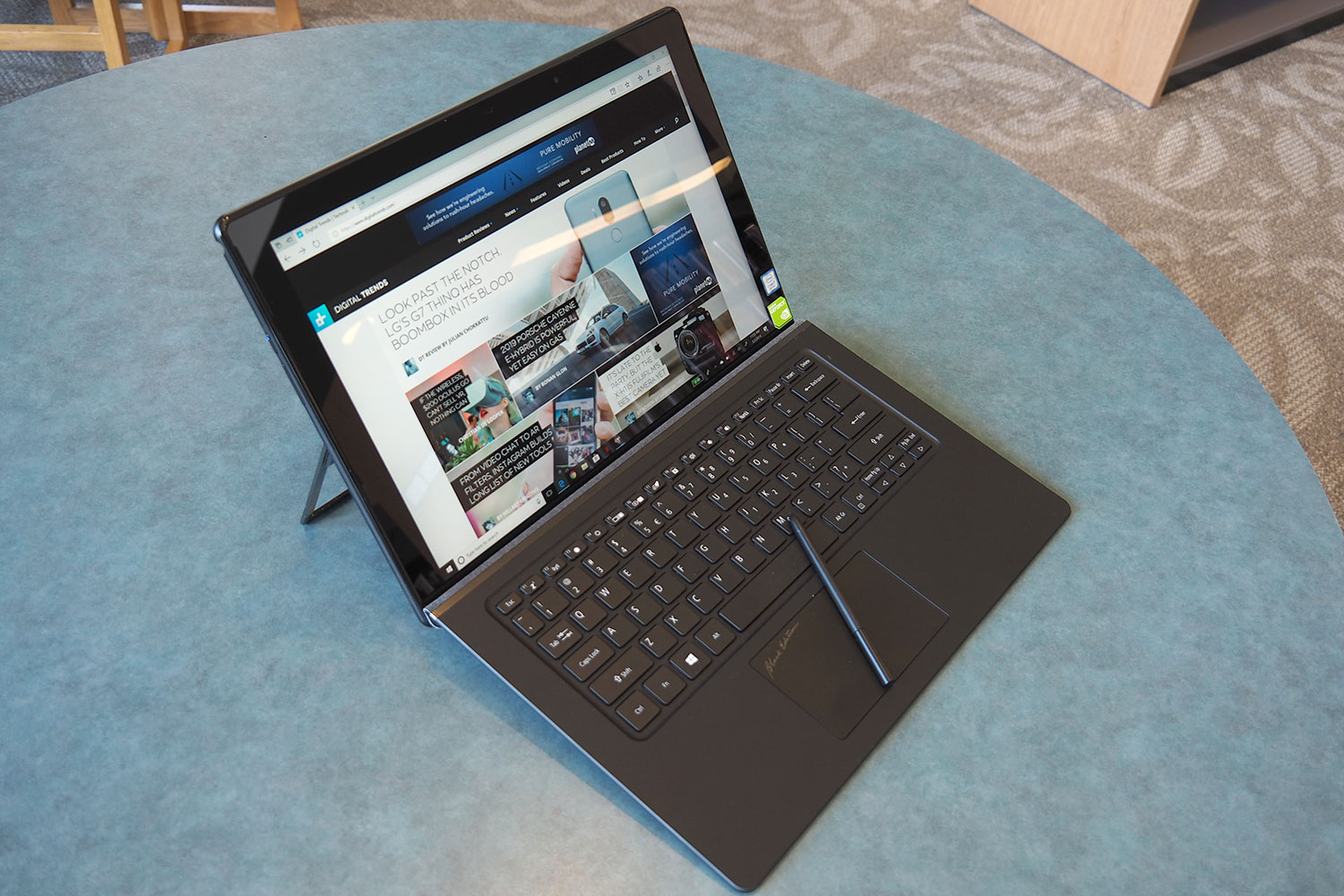
When it comes to making a great computer, sometimes it’s the little things that matter the most. Sure, CPUs and GPUs are important, as are displays and storage devices. But a notebook, for example, can be cut off at the knees when a manufacturer tries to answer a question that no one asked. We’ve seen it time and time again, whether with the keyboard or port selection — or, as we observed most recently, the kickstand.
A 2-in-1 laptop’s kickstands really only need to do one thing well: Hold the screen at a preferred angle. They should have multiple positions to make them useful in various situations, and better yet they should move smoothly through a useful range of angles from almost upright to almost lying flat.
That’s what makes the kickstand on the Acer Switch 7 Black Edition so baffling. It gives new meaning to the term “over-engineered.”
So, where did Acer get it wrong? Well, to put it simply, the company apparently tried to solve a problem that doesn’t really exist. The Switch 7 Black Edition’s kickstand is a complex affair, with magnets that hold a spring-loaded loop of stainless steel in place and buttons on the bottom of the tablet that when depressed move the magnets out of the way. That allows the kickstand to pop open to a default 120 degree angle that can be adjusted by pushing against the springs, up to 165 degrees. Lift up slightly and the angle automatically adjusts within that range.
It sounds good in theory. In practice, the default angle is too large, meaning there’s no way to hold the tablet in a more upright position to avoid glare from overhead lighting. And the buttons only depress when pressed firmly against a hard, flat surface — if you’re sitting in a chair with the tablet in your lap, then you need to hold the tablet in two hands and fumble with the buttons manually. And the detachable keyboard needs to pass the button pushes through to the tablet, making the combination taller and bulkier than it needs to be.
The result is a kickstand that only works well if you’re using the Switch 7 on the right kind of surface and in the right lighting conditions. That’s the opposite of what you want in a 2-in-1, a form factor that’s supposed to suit multiple different use cases.
My own experience with tablet kickstands started with Microsoft’s Surface Pro 3, and it spoiled me. Microsoft engineered a kickstand that is simple in its use and elegant in its design. You simply grasped one edge and pulled it out to the desired angle, no muss, no fuss. It was smooth in operation, offered almost the perfect range of angles, and it held the tablet confidently in place. The 2017 Surface Pro‘s kickstand maintained the same design and extended its range, turning the tablet into a nearly-flat digital drawing board.

In short, Microsoft got it right.
Interestingly, HP’s Spectre x2 detachable tablet also had a kickstand that opened when you depressed a button, but the company abandoned that design with the latest version. Now, just like with the Surface Pro, you simply grasp the Spectre x2’s kickstand and pull it out. It’s far simpler, probably easier and less expensive to make — and serves its purpose much better.
I suppose the real message here is this: Don’t spend engineering time solving a problem that doesn’t exist. You just might end up with something that’s far more complicated than it really needs to be.
Editors' Recommendations
- The best 2-in-1 gaming laptops for 2024
- Don’t buy the Surface Laptop Go 3 — here’s what you should get instead
- Microsoft Surface Pro 9 vs. Lenovo IdeaPad Duet 5i: which 2-in-1 is best?
- Microsoft Surface Pro 9 vs. Surface Pro 8: here’s how they stack up
- Dell XPS 13 2-in-1 vs. Surface Pro 8: New competition

